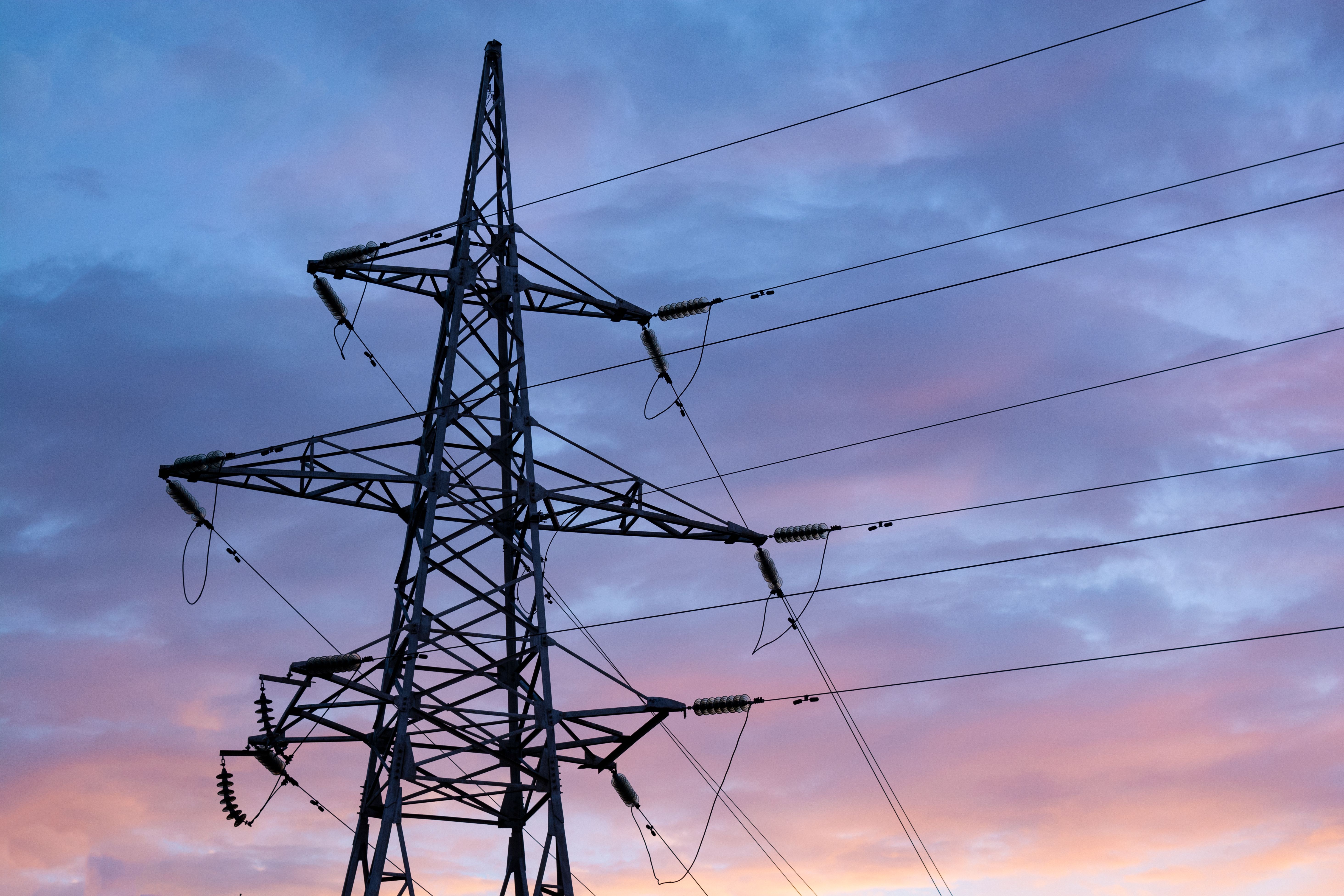Analysis
October 10, 2025
Modelling 24/7 Carbon Free Electricity in Malaysia
Hourly matching commercial and industrial demand with clean power in Malaysia could deliver US$560–710 million in annual fuel savings by 2030, while achieving up to 25% greater emissions reductions than annual matching, according to detailed new modelling.

Summary
With abundant solar and hydro potential, ambitions to peak emissions by 2040 and emerging corporate procurement schemes for clean energy, Malaysia is a prime location for commercial and industrial (C&I) consumers adopting 24/7 carbon free energy (CFE).
We modelled Malaysia’s 2030 power system using the open-source PyPSA package to test different clean electricity policies and technology palettes. Malaysia is modelled using three nodes, corresponding to its three grid systems, which are interconnected with Indonesia, Singapore, and Thailand. The model assigns 5% of national demand to C&I consumers in Peninsular Malaysia and Sarawak, participating in annual and hourly CFE matching (ranging from 70–100%) through power purchase agreements (PPAs) with new clean generators.
Analysis of the model results found that by 2030, 24/7 CFE can be delivered at lower system costs than annual matching, while driving deeper emissions cuts. Hourly matching delivers US$560–710 million in annual fuel savings and up to 25% more emissions abatement, with optimal C&I matching levels at 80% CFE in Peninsular Malaysia and 90% in Sarawak, where net system costs are US$10 million and US$5 million lower, respectively, compared to annual matching.
Safeguarding Malaysia’s competitive edge
Malaysia assumed the 2025 ASEAN Chairmanship with a clear power sector agenda: regional clean energy cooperation, cross-border grid integration, and digitalisation. This leadership comes as Malaysia deepens its own energy transition, guided by the National Energy Transition Roadmap (NETR), which commits to peaking emissions around 2040 and achieving net zero by 2050. As a fast-industrialising economy and a grid still dominated by coal and gas, the country faces both opportunities and challenges as it moves towards greater shares of variable renewable energy and battery storage.
Over the past three years, Malaysia has expanded corporate renewable procurement options through the Corporate Green Power Procurement (CGPP) and Corporate Renewable Energy Supply Scheme (CRESS), giving C&I consumers new avenues to source clean electricity from renewable developers through the national grid. This reflects a gradual but tangible shift, though it is not without its challenges and learning curves.
In August 2025, the Ministry of Energy Transition and Water Transformation reduced system access charges (SAC) for the CRESS programme. The move addresses market concerns over high participation costs, which had constrained uptake. Corporates with decarbonisation commitments continue to seek greater certainty and reform on future electricity tariffs and procurement costs (including the SAC), as well as more streamlined regulations for corporate PPAs. With abundant renewable potential across its three grid regions, Malaysia will need to ensure these mechanisms attract investment and secure long-term corporate demand.
Taking early and proactive steps in facilitating C&I consumers’ adoption of 24/7 CFE could prove to be an essential part of this strategy. So what is 24/7 CFE, and what would it take to make it a reality in Malaysia?
What is 24/7 carbon free energy?
Wind and solar, the cheapest sources of clean energy today, are variable by nature. Electricity consumers seeking to decarbonise their electricity use with variable renewable energy face a persistent mismatch between when clean power is generated and when it is needed. Currently, the dominant approach to procuring and accounting for emissions reductions is based on ‘annual matching’. This involves corporations matching their consumption of electricity with the supply of clean electricity over a year, which results in cycles of surplus and deficit, as fossil-based generators must be relied upon to pick up the slack, thereby introducing emissions. If, rather than matching electricity use with electricity from carbon free sources on an annual basis, we instead move to hourly matching, we can move closer to a decarbonised grid.
This approach is a central focus of the Greenhouse Gas Protocol (GHGP), which governs how companies account for emissions from purchased electricity, and is in the process of a multi-year revision of its standards. While hourly emissions accounting is emerging as the preferred accounting method, the GHGP does not set targets or grade performance.
How well a consumer is meeting their 24/7 CFE goal can be summarised by their CFE score for any given hour. This is the percentage of their generation that comes from carbon free sources, and considers both the generation from CFE power purchase agreements (PPAs), and electricity purchased from the grid. To calculate the scores, we follow the methodology set out by Google.
What are the cost, investment and emission implications of a 24/7 CFE for Malaysia?
We built a detailed, open-source model of Malaysia’s electricity grid to explore the implications of 24/7 CFE for corporate buyers and grid planners. Specifically:
- What does switching from annual to hourly matched procurement mean for corporate buyers from a cost and supply perspective?
- What are the costs and benefits of this change in procurement strategy for the grid i.e. does it increase or decrease costs, investments and emissions?
Model setup
To answer these questions, we developed a representative model of Malaysia’s 2030 power system using the open-source Python for Power System Analysis (PyPSA) package. The model is a copper-plated grid dispatch or production cost model with 8,760-hour temporal resolution.
With this model, we tested different clean electricity policies with different generation technology configurations, or palettes, to understand the cost, investment, and emissions implications.
The model includes three nodes and three cross-border interconnectors. The three Malaysian nodes are Peninsular Malaysia (MYSPE), Sarawak (MYSSK), and Sabah (MYSSH). MYSPE is interconnected with Singapore (SGP) and the south of Thailand (THASO), while MYSSK can trade power with MYSSH and Kalimantan, Indonesia (IDNKA).
In our model, 5% of Malaysia’s total demand in 2030 is attributed to C&I consumers participating in clean electricity matching. This share is intended to represent broader trends in C&I demand moving towards decarbonisation. Only Peninsular Malaysia and Sarawak have assigned CFE demand. While Sabah is modelled to 2030 and trades power with Sarawak, it is not considered to be participating in CFE due to limited projected firm C&I demand in 2030.
This CFE demand is modelled under two schemes: annual matching and hourly matching, with the latter tested at CFE levels ranging from 70% to 100% of hours in a year. C&I consumers meet this demand through PPAs with new clean generators, which the model builds and optimises. When renewable generation on the grid is high, certain hours of C&I demand can also be covered by purchasing clean electricity directly from the grid.
For more information on the methodology, please refer to our modelling methodology documentation.
What we found
Savings under hourly matching start at US$560 million
Achieving clean firm electricity every hour of the year for participating C&I consumers is more cost-effective compared to annual matching, while also reducing emissions and fuel costs across the system. At 80% CFE in Peninsular Malaysia and 90% CFE in Sarawak, these benefits can be achieved at lower net system costs than annual matching.
Grid savings grow as CFE targets rise, ranging from US$560 to 710 million in avoided fuel cost, compared to annual matching, where savings are capped at US$670 million. These fuel cost savings are due to more clean power being built and procured by C&I consumers who may be able to sell their excess electricity back to the grid. As solar and battery costs keep falling, this replacement of expensive LNG and coal becomes more practical — but Malaysia will need clear rules to let corporates earn revenue from selling excess power.
Overall, reaching 80% CFE nationwide costs 15% less than annual matching, with a total system cost of US$56 million owing to lower investment needs and higher fuel savings.
Hourly matching is better at driving down emissions.
Emissions reductions under annual matching peak at 80% CFE in Peninsular Malaysia and 90% CFE in Sarawak. As hourly matching becomes more stringent, system-wide emissions fall steadily, allowing hourly matching to deliver greater reductions over time. At 90% CFE, hourly matching cuts 24% more emissions than annual matching in Peninsular Malaysia and 95% more at a 95% CFE target in Sarawak. By 100% CFE, hourly matching delivers nationwide emissions savings of nearly 2.76 MtCO2e, 25% more than the 2.2 MtCO2e achieved under annual matching.
Peninsular Malaysia in focus: 80% CFE can be met with less solar and batteries, and at US$20 million less net system cost than annual matching
More efficient procurement strategies can reduce buildout needs. In Peninsular Malaysia, building 8.2 GW of solar and 2.5 GW of battery capacity to meet 80% CFE would cost C&I consumers US$791 million in capital and operational costs. This is 3% cheaper than annual matching, as well as 3% lower in terms of capacity requirements.
On a gas-dominated grid, this strategy generates substantial system-wide benefits: annual fuel savings of around US$600 million at 80% CFE, which rises to US$650 million at 100% CFE, resulting in net system costs US$20 million lower than annual matching.
Peninsular Malaysia in focus: Solar is the backbone of CFE portfolios
Solar is the backbone of Peninsular Malaysia’s CFE portfolios, with batteries complementing to smooth output. Batteries increase the hours when C&I off-takers can rely on their solar PPA resources to achieve CFE. These hybrid solar-plus-battery systems become particularly crucial at the highest CFE scores, where the grid can no longer be completely relied on for hourly matching. Reaching 90-95% CFE involves a buildout of 12.4 to 13.1 GW, enabling much higher clean coverage in comparison to annual matching.
Sarawak in focus: the hydro-dominant grid means C&I consumers can draw clean power from the grid, resulting in less buildout
Sarawak is ideal for hourly matching and a uniquely cost-effective location for green industrialisation. From 70% to 90% CFE, participating C&I consumers can rely on the grid to meet at least half of their hourly CFE needs. At 70% CFE, approximately 65% of their demand can be met by grid-based power.
These lower CFE hourly matching regimes require less new renewables capacity buildout than under annual matching, and only modest buildout in higher CFE scenarios, as C&I consumers can rely on the main grid in lower matching regimes. 90% CFE would entail building just 1.1 GW of solar paired with 350 MW of batteries. This would be equivalent to US$101 million in system cost — 8% less than annual matching, which caps out at 1.2 GW of solar. Even at 95% CFE, the required buildout is only around 1.7 GW of solar-plus-batteries.
Sarawak in focus: At 90% CFE, Sarawak saves US$5 million in net system cost compared to annual matching.
Lower net system costs for hourly market are mainly due to higher fuel cost savings of US$44.2 million annually at 90% CFE. Assuming a 20-year useful life of new buildout, procurement costs remain modest across most scenarios, with hourly matching generation costs ranging from US$16–62/MWh.
However, costs rise sharply beyond 90% CFE, but to manageable levels. Battery storage needs remain limited up to 99% CFE (0.7 GW), with solar capped at 1.6 GW, but reaching 100% requires a further 1 GW of storage to extend clean energy coverage to more hours. This drives total CFE capacity to 3.3 GW and doubles procurement costs to US$107.2/MWh.
Click the link below to read the full report.



